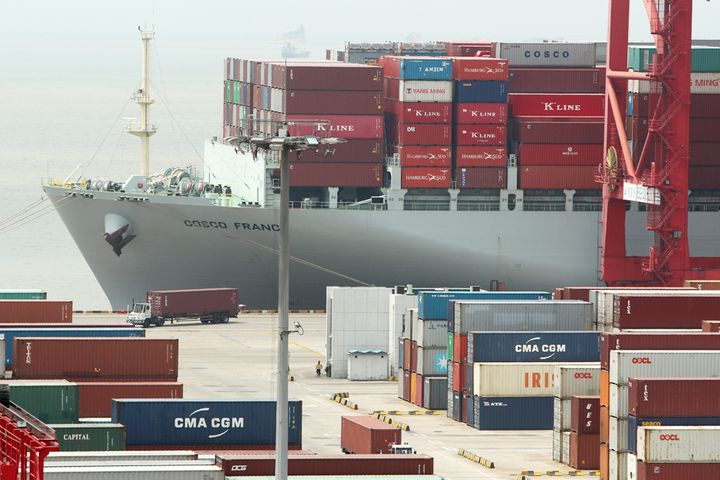 Belt and Road Countries Are World's No. 2 Trade Bloc, Study Shows
Belt and Road Countries Are World's No. 2 Trade Bloc, Study Shows(Yicai Global) May 8 -- The Belt and Road project that China initiated in late 2013 has became the world's second-biggest trade grouping, according to a new study.
Trade between the nations taking part in the Belt and Road Initiative, a grand trans-continental plan to develop and integrate the economies of China and other developing nations, accounted for 13.4 percent of the world's total by 2017, the Economic Daily reported, citing the conclusions of the Belt and Road Trade Investment Index issued yesterday.
The index was a joint effort by Beijing's University of International Business and Economics, Beijing-based financial technology and data service provider Refinitiv China, the research institute of China Development Bank and many other famous domestic and international organizations.
"We discovered via our analysis of the scale of internal trade of countries and regions along the Belt and Road that it has now taken second place as a world trade entity behind the European Union," said Prof. Hong Junjie, dean of the School of International Trade and Economics and Economics Department at UIBE. The EU's internal market makes up 65 percent of global trade.
Foreign investment has bucked the general trend by increasing and deeper integration is beginning to pay a dividend, Hong said. "We can thus project that regions along the Belt and Road will continue to become new future global trade bright spots," he added.
The research results make clear that China's total imports of intermediate goods stood at USD943.12 billion, some USD302.31 billion of which came from Belt and Road countries. Huge Chinese demand will greatly promote participating countries' trade.
The countries enjoyed an increasingly prominent position in global investment, with growth in cross-border capital far higher than in other regions.
BRI participants directly invested USD155.4 billion overseas and attracted USD323.7 billion in 2017, gains of 27.3 percent and 2.1 percent, respectively, the research shows. They have become the world's most important destinations for foreign investment.
But the economies of the BRI need to enhance international cooperation to facilitate trade and investment, make up for insufficient infrastructure investment, improve value chain cooperation and bridge imbalances between different regions.
These countries and regions are expected to become new global centers of growth in trade and investment.
Editor: Ben Armour